With its lush grasslands and dotted forests, Iowa is the perfect place to get outdoors this summer. But what about ticks in Iowa? Ticks live throughout the world, and Iowa is no exception. There are four types of ticks commonly found in Iowa; the wood tick, lone star tick, deer tick, and brown dog tick. Only one carries Lyme disease of these four ticks, and only one typically lives indoors.
Here, we’ll discover more about the four types of ticks in Iowa. We’ll learn how to recognize each species, where to find them, and which diseases and pathogens they carry. Then, we’ll learn about tick prevention and what you should do if you find a tick on you or your canine companion.
Wood Tick (American Dog Tick)
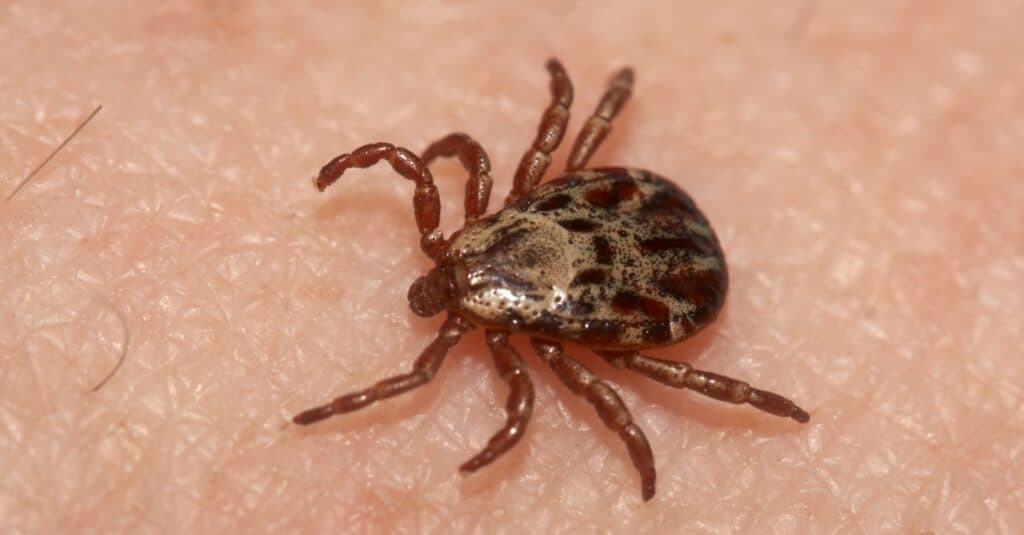
American dog ticks have oval bodies and are significantly bigger than other species of ticks in Iowa.
©iStock.com/ironman100
Wood ticks are most likely to be found on dogs, but they won’t say no to feeding on human blood if the opportunity presents itself. Females have red-brown bodies with mottled tan scuta (shields over the shoulders), while males have red-brown legs and mottled tan bodies.
These ticks are most likely to be found in fields rather than forests. They don’t transmit Lyme disease, but they are vectors for Rocky Mountain spotted fever and tularemia. Transmission of tularemia to dogs can lead to canine tick paralysis, which requires immediate medical treatment. American dog ticks are most active in the spring and early summer.
Lone Star Tick
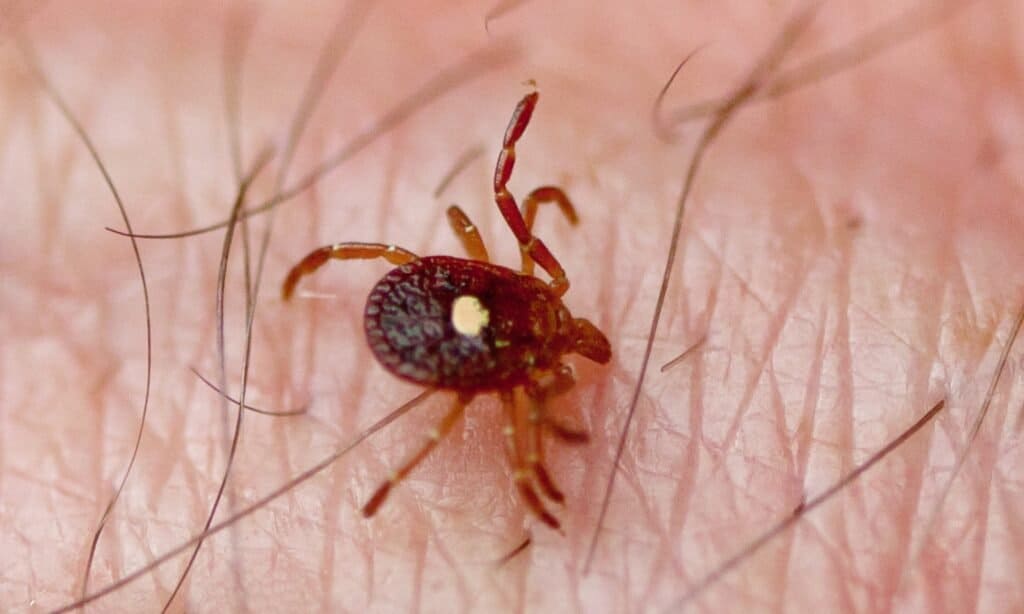
The lone star tick is not host-specific.
©iStock.com/epantha
Lone star ticks in Iowa are even lighter in color than wood ticks and smaller. Female lone star ticks are entirely red-brown, with a single tan spot in the center of their back. Males lack this ‘lone star.’ Instead, they have light tan mottling. Both males and females have round bodies with large, highly visible mouthparts.
Like the wood tick, the lone star tick does not carry Lyme disease. Instead, these ticks in Iowa are known to transmit ehrlichiosis, which can be treated with antibiotics. These ticks are not host-specific, and will feed on any creature that strays across their path. Lone star ticks are known to ‘hunt’ down hosts by following their carbon dioxide trail.
Deer Tick (Black-legged Tick)
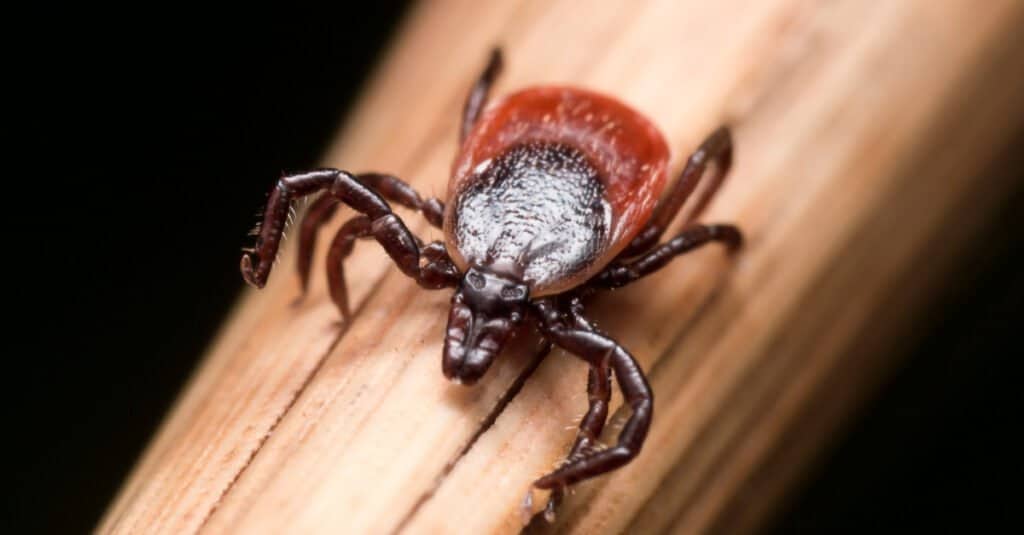
The black-legged ticks get their name from their favorite host and unique coloring.
©Steven Ellingson/Shutterstock.com
Of all the ticks in Iowa, the deer tick is perhaps the most worrisome. Deer ticks are easy to recognize—they’re the only ticks in Iowa with black legs. Their black legs are paired with a mahogany brown body with black scutum and mouthparts. These ticks hunt by ‘questing,’ or, waiting at the outermost fringes of bushes or tall grass, with their front legs extended, for a host to pass by.
Deer ticks in Iowa are the only tick capable of spreading Lyme disease. Lyme disease is a debilitating illness best known by the bullseye-shaped rash that appears directly after a bite from an infected tick. Black-legged ticks prefer feeding on white-tailed deer, but will also feed on humans, dogs, raccoons, foxes, mice, rats, and other creatures.
Brown Dog Tick
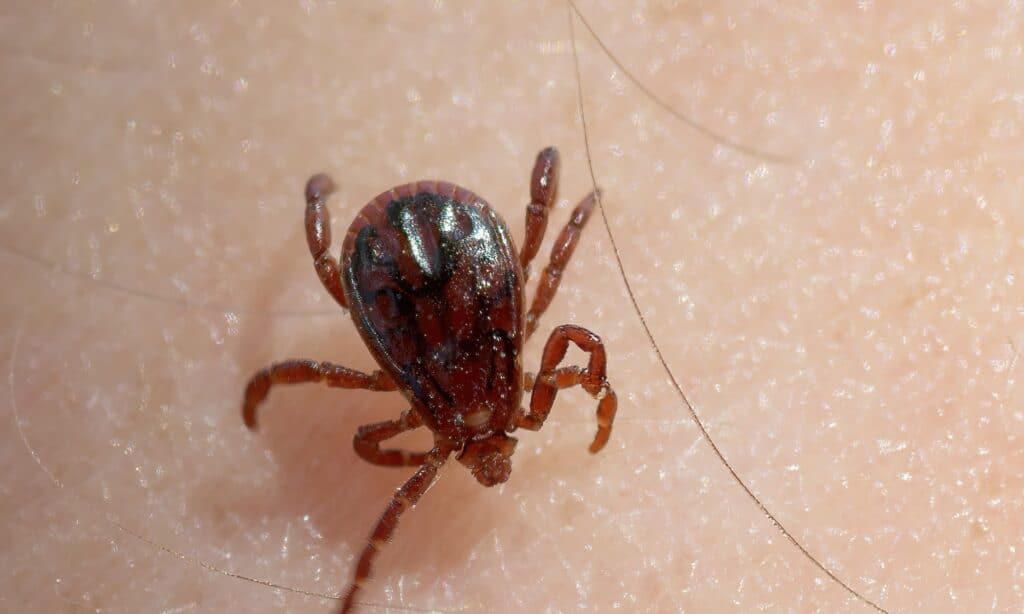
. Brown dog ticks are one of two types of dog ticks in Iowa, the other being the American dog tick.
©iStock.com/RobertAx
Out of all the ticks in Iowa, only the brown dog tick lives indoors. That’s right—not even the indoors are safe from ticks. The good news (relatively) is that brown dog ticks feed almost exclusively on dogs, only very rarely latching onto humans or cats. These ticks have deep brown, almost rectangular bodies with brown legs.
Brown dog ticks live in places with dogs. Specifically, they can be found in kennels, veterinary offices, or private homes with dogs. They prefer dog beds, crates, or other places dogs frequent. Unlike deer ticks, brown dog ticks do not transmit Lyme disease.
When is Tick Season in Iowa?
Ticks are lovers of warm weather and sunshine. As such, you’re most likely to encounter ticks in Iowa in the spring and summer months, from March to November. During the winter, ticks go into hibernation, lying dormant under the snow or in the leaf litter of forests. Baby ticks are born at the beginning of spring and spend the next months of their lives looking for hosts and molting into their nymph and adult forms.
Do Ticks in Iowa have Lyme Disease?
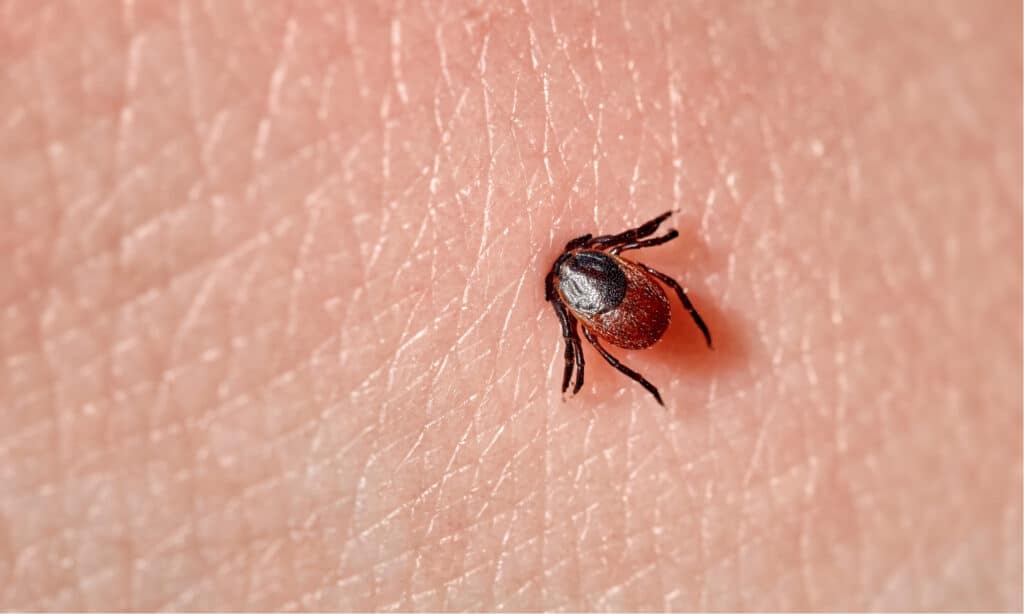
Only the deer tick transmits Lyme disease in Iowa.
©Evgeniyqw/Shutterstock.com
Unfortunately, yes—there is one type of tick in Iowa that carries Lyme disease. Deer ticks, or black-legged ticks, are the primary vector of Lyme disease in North America. Lyme disease can take many forms and is often difficult to diagnose because it mimics the symptoms of many other illnesses. Early diagnosis is key to a good prognosis.
How to Avoid Ticks in Iowa
To avoid ticks in Iowa, always wear light-colored, long-sleeved pants and shirts when hiking or exploring the outdoors. Avoid moving through areas of thick vegetation, and always check yourself and your canine companions for ticks after any outdoor activity.
How to Remove Ticks in Iowa
If you happen to find a tick embedded in your skin or in your friend, loved one, or dog, don’t panic. The tick should be removed as soon as possible. Using tweezers, grasp the tick as close to the skin as possible, then gently pull it out. Once removed, crush the tick and dispose of it, then clean the wound with disinfectant. Monitor the bitten area closely over the following weeks for signs of rash or infection.
The photo featured at the top of this post is © 7th Son Studio/Shutterstock.com
Thank you for reading! Have some feedback for us? Contact the AZ Animals editorial team.






